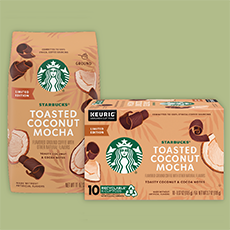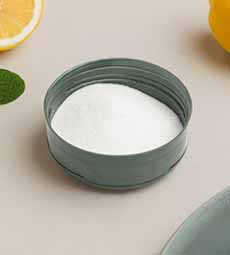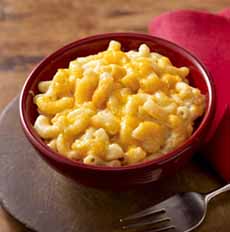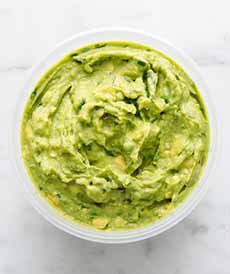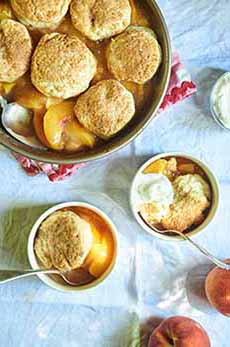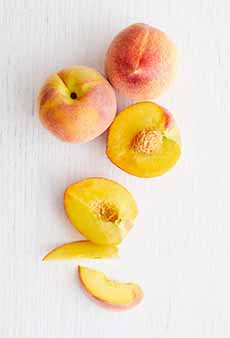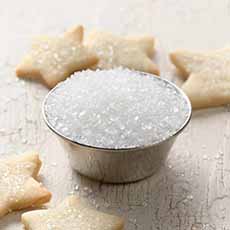|
What food is celebrated on April 27th? It’s National Devil Dog Day!
Drake’s Bakeries, originally known as Drake’s Cakes, introduced the Devil Dog—essentially a whoopie pie shaped like a hot dog—in 1926. The two layers of devil’s food cake filled with cream really took off.
> In addition to a recipe for homemade devil dogs, below, check out the recipe for Mini Garden Cakes (photo #2).
> The history of devil’s food cake.
> The history of cake.
> The different types of cakes: a photo glossary.
We’ll pay tribute to the snack cake shortly.
But the real story begins with U.S. Marines.
THE HISTORY OF DEVIL DOGS
Thanks to the article, “Bulldog Mascots in the Marine Corps” by Ellen Guillemette, a historian at the Marine Corps Recruit Depot Museum Foundation.
During the fierce and tenacious fighting of the Marines at Belleau Wood during World War I, the Germans began to call their opponents “Teufel-Hunden,” which translates to Devil Dogs.
Teufel Hunden were wild, ferocious, and vicious mountain dogs of Bavarian folklore.
The sobriquet stuck among the Marines, who used the English translation.
It wasn’t long before a recruiting poster painted by Charles B. Falls appeared, showing a dachshund wearing a spiked helmet and Iron Cross. The dog was running away from an English bulldog wearing a helmet with the globe and anchor insignia on it (photo #5).
You can order a copy from Fine Art America.
The poster also inspired Drakes Cakes to make a devil’s food snack cake. More about that in a minute.
THE MARINES CREATE A DEVIL DOG MASCOT
Charles B. Falls’ recruiting poster led the Marines to select the bulldog as their mascot.
The first mascot bulldog was named “Jiggs” after a popular personality in the cartoon strip “Jiggs and Maggie.”
Jiggs (photo #6) “enlisted” in the Marine Corps on October 7, 1922 and was issued a service record book, a custom already in effect for mascots in the U.S. Navy and Marine Corps.
General Smedley D. Butler* (photo #6) himself signed Jiggs’ enlistment papers and appointed him a sergeant major. Jiggs received worldwide recognition, appeared at all sporting events where Marines played, and everywhere else that his presence might draw public attention and enhance the morale and spirit of Marines.
Many Marine Corps athletic teams were called the “Fighting Bulldogs.”
Sergeant Major Jiggs’ death, on January 9, 1927, was mourned throughout the Corps. His satin-lined coffin lay in state in a hangar at Quantico, surrounded by flowers from hundreds of admirers. He was interred with full military honors.
Former heavyweight boxing champion, James J. “Gene” Tunney, who had served with the Marines in France, donated his English bulldog, to become the next mascot. The dog, which was renamed Jiggs II, died in 1928.
During the 1930s, 1940s, and early 1950s mascots were all named “Smedley,” a tribute to Major General Butler. But towards the end of the 1950s, when the last Smedley passed, there was a new dog in town.
On July 5, 1957, Chesty I made his debut at Marine Corps Barracks, Washington, D.C., beginning a new dynasty.
Over the years, numerous English bulldogs have faithfully served at the Barracks, some receiving formal burial honors within the Barracks’ hallowed grounds.
The current “Chesty” dynasty honors the most famous Marine, Lt. Gen. Lewis B. “Chesty” Puller Jr (1798-1971).
During the Jiggs era, in August 1918, Chesty Puller dropped out of the Virginia Military Institute to enlisted in the Marines. He redeployed to Nicaragua after a brief stint in the U.S., and would serve in China before World War II.
Puller served at Guadalcanal, in Korea, and earned five Navy Crosses over his career, becoming the most decorated marine in the history of the corps. His leadership, daring and bravado during World War II and the Korean War would make him one of the most legendary Marines who ever wore the uniform.
We thank all Marines and all American troops for their service.
NATIONAL DEVIL DOG DAY BECOMES A HOLIDAY
It was not the marines, but Sean Alexander Sobel who founded National Devil Dog Day in 2017.
His grandfather, Howard Leslie Sobel, introduced Devil Dogs to the family when Sobel was a child, Sean wanted to share the history of the snack.
In 2017, Sobel created the holiday, which was first celebrated in 1918.
Coincidentally, also in 2017 Drake’s introduced Fudge Dipped Devil Dogs (photos #3 and #4) [source].
By the way, we’ve been unable to locate Sean Alexander Sobel online, so we don’t know anything more about him: where he lives, what he does, how he made the holiday happen, etc. If you know, gives us a shout.
Now, are you ready to bake some Devil Dogs?
RECIPE: HOMEMADE DEVIL DOGS
Unlike the commercial version, this recipe is all natural. You’ll taste a big difference.
In fact, for fun, taste your homemade Devil Dog next to the store-bought version.
You can also turn this recipe into ice cream sandwiches. Instead of making the filling, use softened vanilla ice cream and place the completed sandwiches in the freezer.
Thanks to Dying For Chocolate for the recipe.
Ingredients For The Cake
1 egg
1/2 cup unsalted butter, softened
1-1/4 cup sugar
1 cup milk
1 teaspoon vanilla extract
2-1/3 cups all-purpose flour
1/2 cup Dutch process cocoa
1/2 teaspoon salt
1/2 teaspoon baking powder
Ingredients For The Filling
6 tablespoons unsalted butter, softened
1 cup confectioners sugar
1 7-ounce jar marshmallow creme (1-1/2 cups)
1 teaspoon pure vanilla extract
Preparation
1. MAKE the cake. Preheat the oven to 400°F. In medium bowl with electric beaters, blend together the egg, shortening, and sugar. Continue to beat while adding the milk and vanilla.
2. SIFT together in another bowl the remaining cake ingredients: flour, cocoa, salt, and baking powder.
3. SPOON onto a lightly greased cookie sheet tablespoons of batter, creating strips about 4 inches long and 1 inch wide. Bake for 5-6 minutes until done. Cool.
4. MAKE the filling: Put the butter in the bowl of stand mixer fitted with the whisk attachment. Cream until fluffy (about 4 minutes).
5. ADD the confectioners sugar, marshmallow cream, and vanilla and continue mixing on low speed until combined, fluffy, and smooth (about 2 minutes).
|












